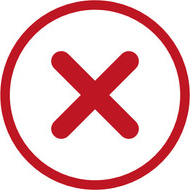Entities and Entity Types | Yext Hitchhikers Platform
What You’ll Learn
In this section, you will learn:
- The difference between entities, entity types, and fields
- Examples of entity types
- What information is stored on an entity
What is an Entity?
An entity is the primary object stored in the Knowledge Graph. You can also think of it as a row in a database.
Entities have a type and are comprised of fields. Some fields apply to many entity types (such as Name or Photos), and other fields are specific to certain entity types (for example, a Delivery URL is specific to a Restaurant entity type, and a Start Date is specific to an Event entity type).
Examples of entity types and specific fields include:
- Location - many of these fields are universal, such as Name, Address, Phone, etc.
- Event - fields like Start/End Date/Time, Location, Ticket URL, etc.
- Healthcare Professional - fields like Name, NPI, Education, etc.
- Job - fields like Job Location, Department, etc.
- FAQ - fields like Question, Answer, Keyword, etc.
- Product - fields like Photo, Description, In Stock, etc.
There are two types of data stored on entities:
Fields, as mentioned above. These can store values to describe the entity for use on services like Listings and Pages, as well as for internal organization.
Metadata, which is internal data about the entity itself. This includes the entity type, the entity ID (a unique identifier used in integrations), profile language, and country.
What are Entity Types?
Each entity has a type. Yext provides built-in entity types for common data objects, like Locations, Healthcare Professionals, Products, or Jobs.
As mentioned above, each entity type comes pre-defined with fields specific to that type. You can add your own custom fields to these types as you need in order to customize the Knowledge Graph for your business.
We recommend that you use built-in entity types whenever possible, because they are designed to be compatible across the whole Yext platform, such as for use in Search, Listings, and Pages, as well as third-party data integrations
However, if you need to, you can define your own custom entity types. Custom entity types can be used for any kind of data — but there are some drawbacks. Custom entity types are not guaranteed to be compatible with all uses across Yext, and cannot be used at all for Listings.
Below is an overview of how built-in and custom entity types work:
| Built-in Entity Types | Custom Entity Types | |
|---|---|---|
| Yext defines the core schema, users can add additional custom fields to it | User defines the schema by adding any Built-in or Custom Field to it | |
| Compatible with Listings |  |
 |
| Compatible with Pages |  |
 |
| Compatible with Search |  |
 |
| Can control display name, API name, entity type description & all fields |  |
 |
What is the primary object stored in Yext?
What are some benefits of using built-in entity types whenever possible? (Select all that apply)
What terms best describe the Address information on a Restaurant entity?
Climbing that leaderboard! 📈

